Complete Solutions to Solved Examples of chapter LAWS OF MOTION of Class 11 book with complete answers and questions
| Class 11 | PHYSICS |
| Chapter | LAWS OF MOTION |
| DC PANDEY | Solved Examples |
| Number Of Questions | 15 |
| Academic Year | 2023-24 |
A ball of mass `1kg` is at rest in position `P` by means two light strings `OP` and `RP`. The string `RP` is now cut and the ball swings to position `Q`. If `theta =45^(@)`. Find the tensions in the strings in position `OP`(when `RP`was not cut ) and `OQ` (when `RP`was cut ). (take `g =10m//s^(2)`).
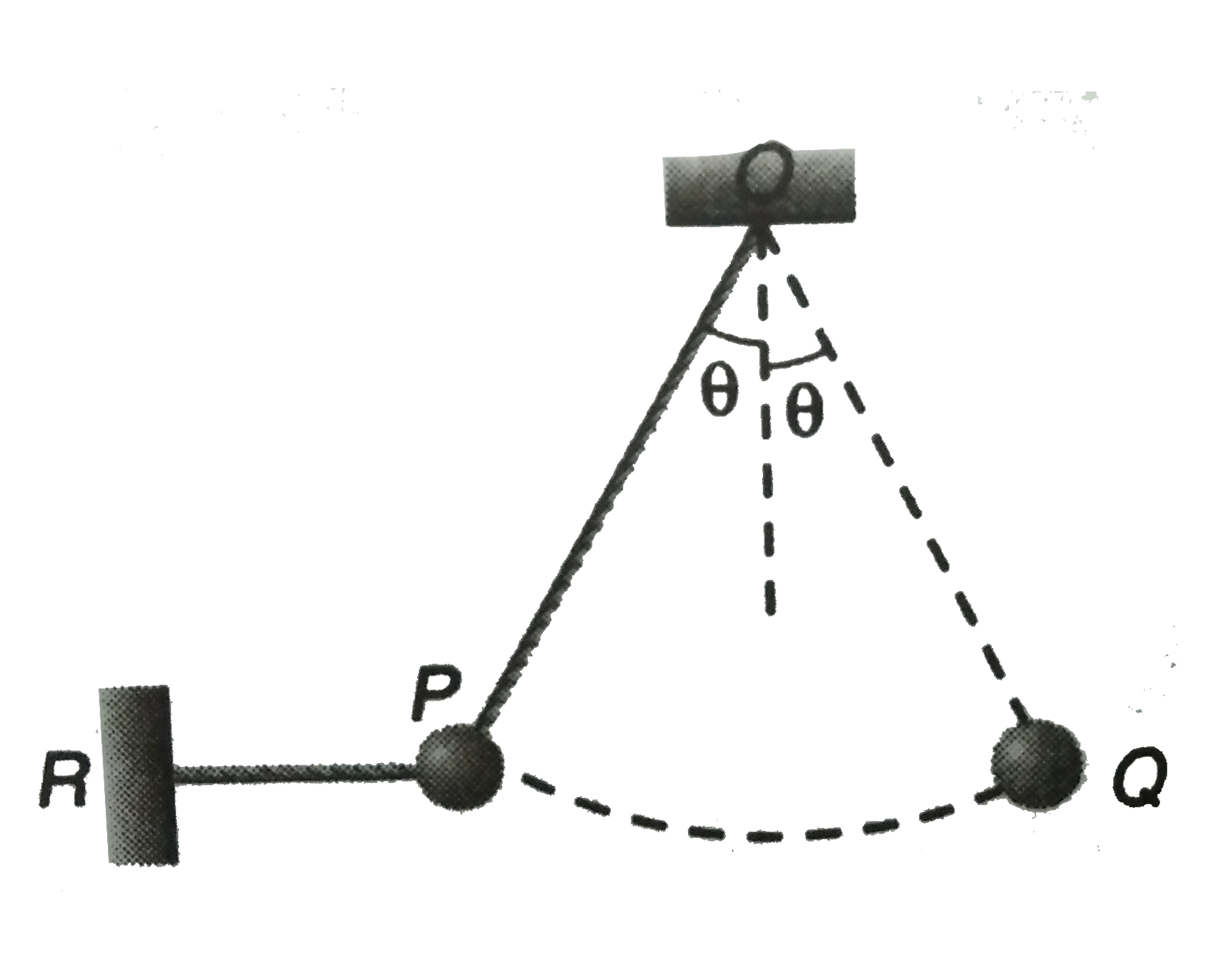
View SolutionIn the given figure mass of string `AB` is `2kg`. Find tension at `A,B` and `C`, where `C` is the mid point of string.
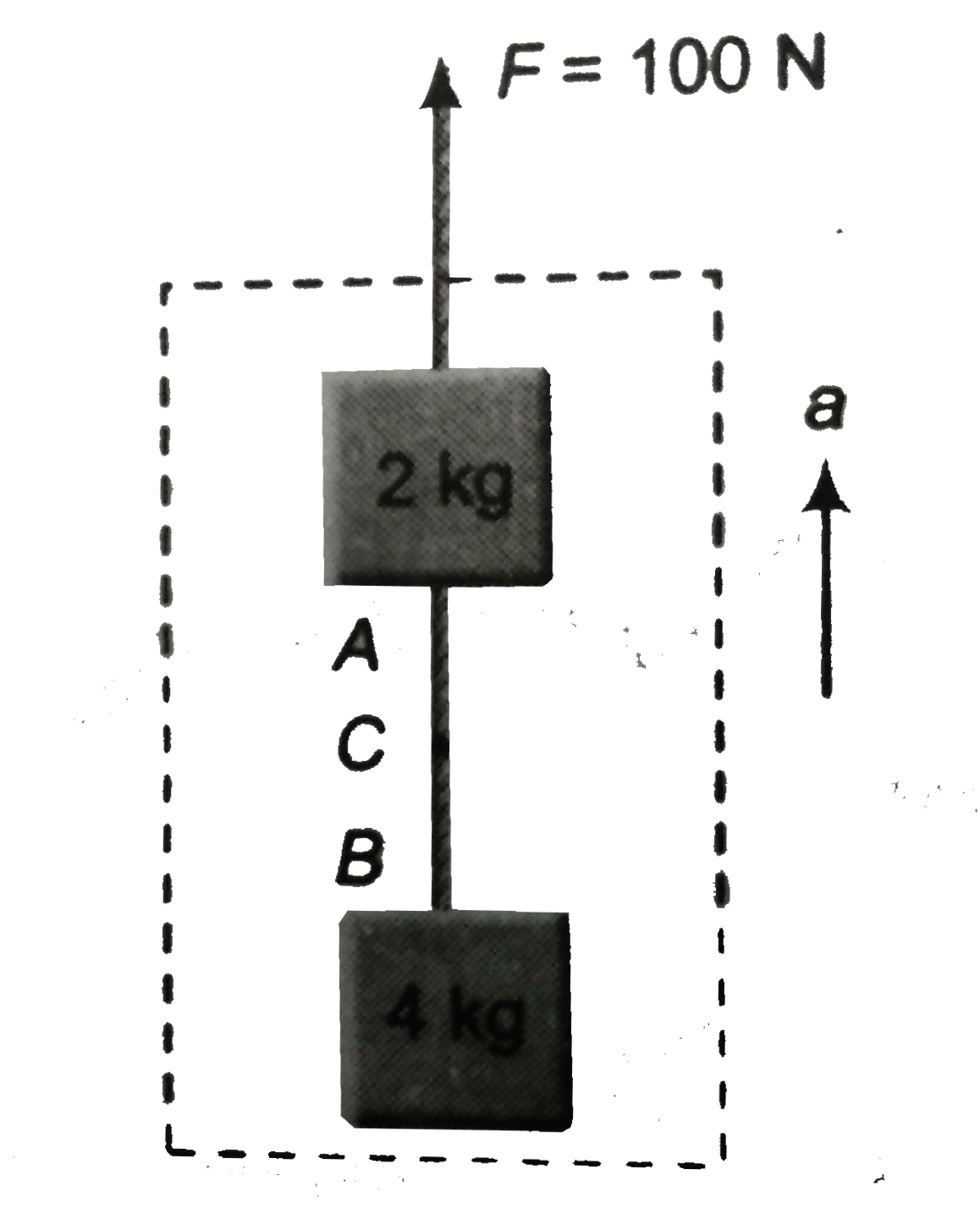
View SolutionIn the figure shown find relation between magnitudes of `a_(A)` and `a_(B)`.
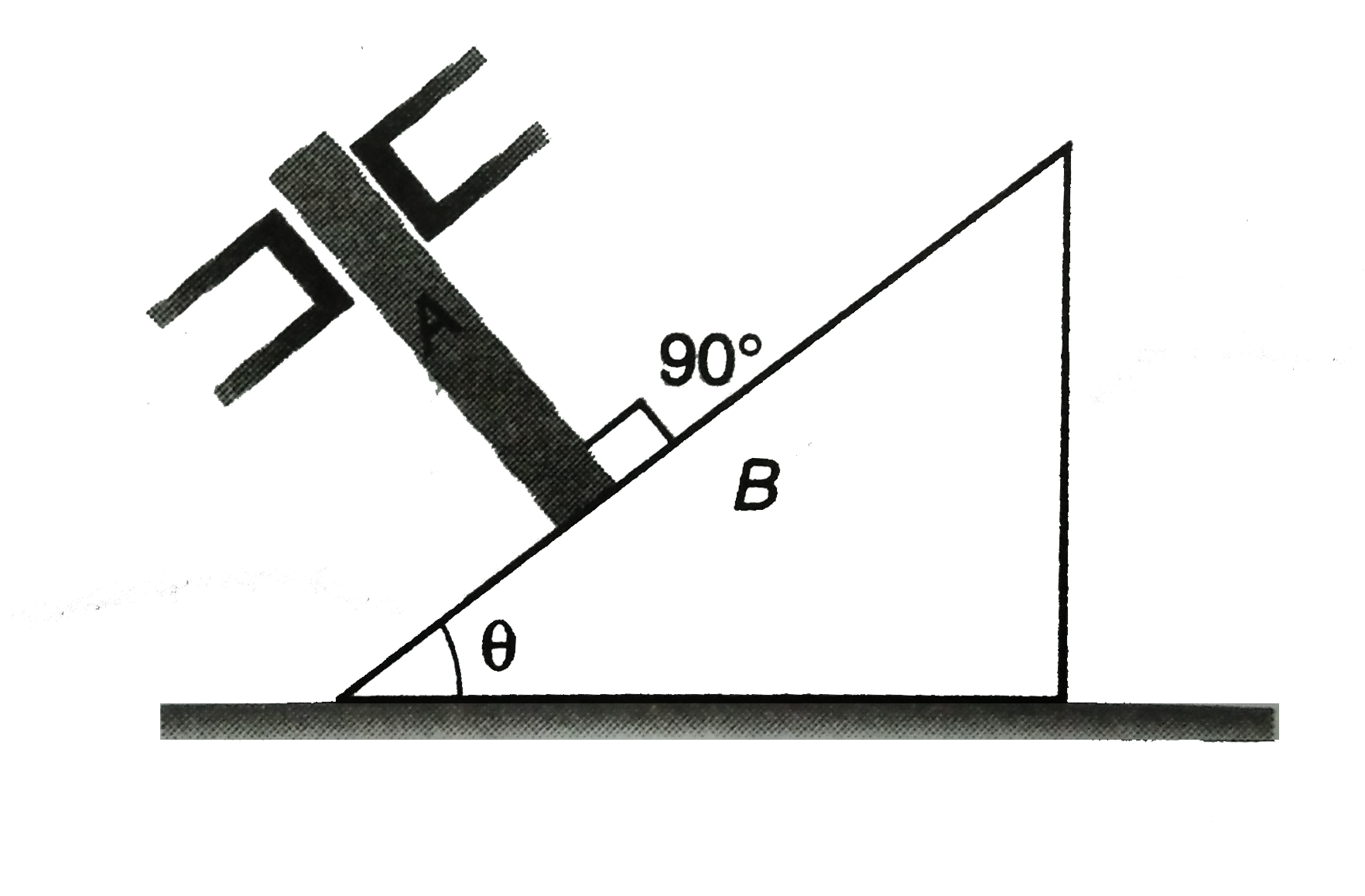
View SolutionIn the arrangement shown in figure, the rod of mass `m`held by two smooth walls, remains always perpendicular to the surface of the wedge of mass `M`. Assumming all the surface to be frictionless, find the acceleration of the rod and that of the wedge.

View SolutionIn the arrangement shown in the Fig, the ends P and Q of an unstretchable string move downwards with uniform speed U. Pulleys A and B are fixed.
Mass M moves upwards with a speed
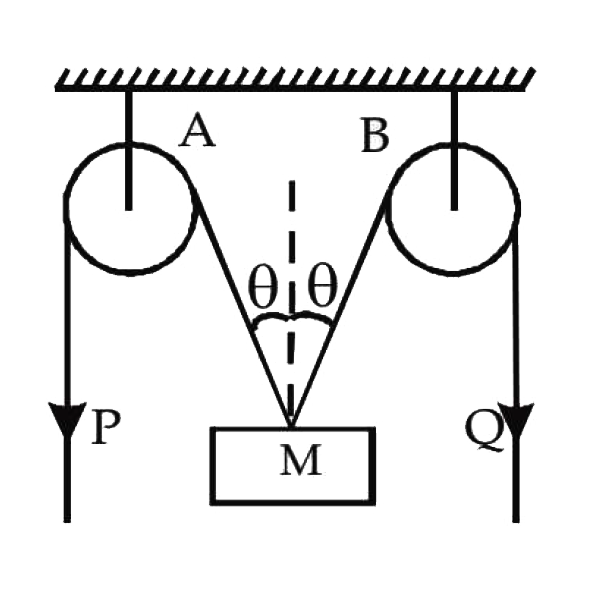
View SolutionIn the abjoining figure, wire `PQ` is smooth, ring `A` has a mass `1kg` and block `B,2kg`. If system is released from rest with `theta =60^(@)`,find

(a)constraint relation between their velocities as a function of `theta`.
(b) constrain relation between their accelerations just after the release at `theta=60^(@)`.
(c) tension in the string and the value of these accelerations at this instant.
View SolutionIn the figure shown,
(a) find the force of friction acting on the block.
(b) state whether the block will move or not. If yes then with what acceleration?
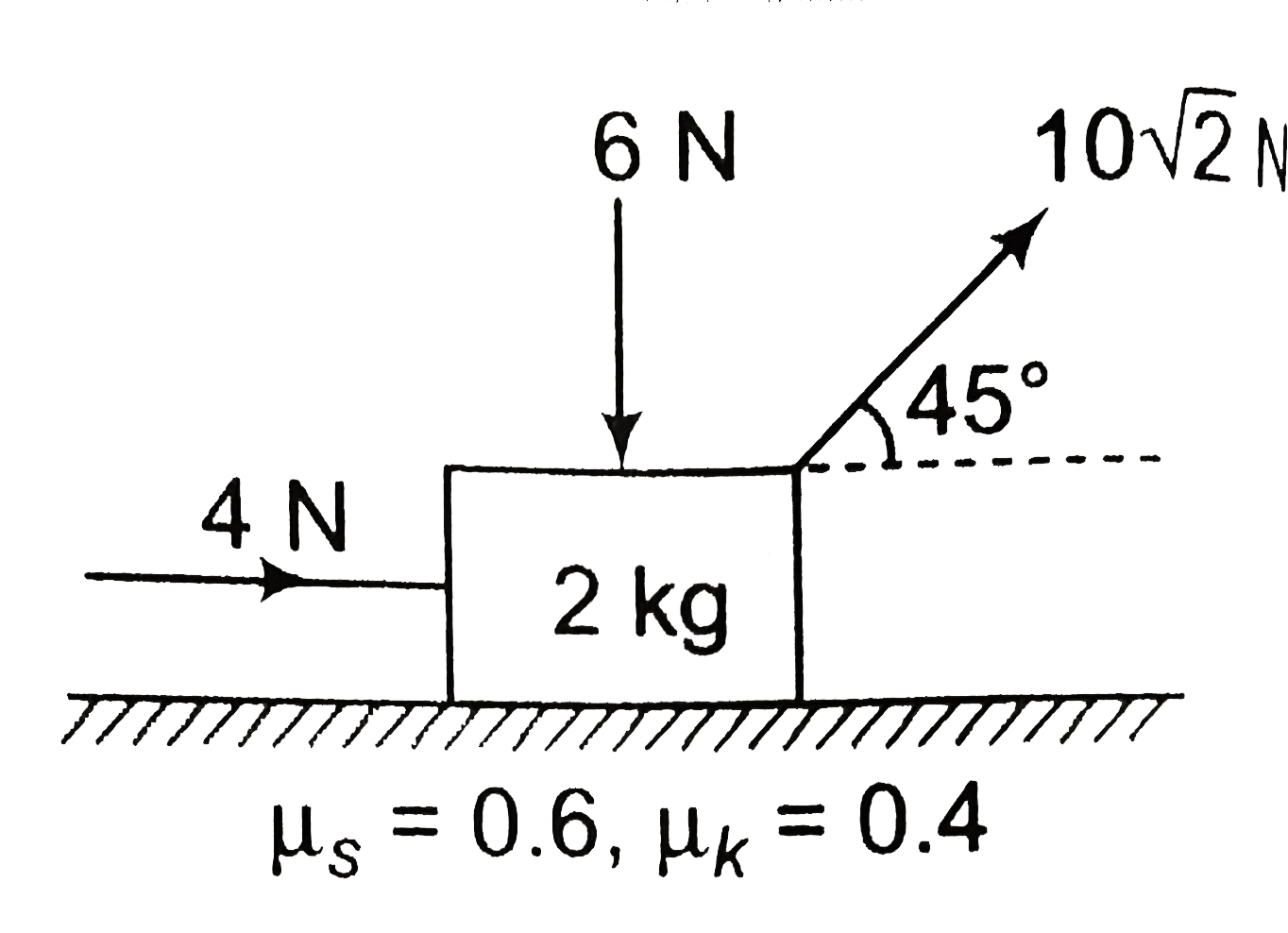
View SolutionIn the figure shown,
(a) find the force of friction acting on the block.
(b) state whether the block will move or not. If yes then with what acceleration?

View SolutionA block of mass 2 kg is pushed against a rough vertical wall with a force of 40N. Coefficient of static friction being 0.5. Another horizontal force of 15 N, is applied on the block in a direction parallel to the wall. Will the block move? If yes in which direction? If no, find the frictional force exerted by the wall on the block.
View SolutionIn the figure shown, `F` is in newton and `t` in seconds, Take `g =10 m//s^(2)`.
(a) Plot acceleration of the block versus time graph.
(b) Find force of friction at,`t =2_(s) and t =8_(s).`

View SolutionRepeat the above problem, if instead of `mu`, we are given `mu_(s)` and `mu_(k)`,where `mu_(s) =0.6` and `mu_(k) =0.4`.
View SolutionTwo blocks `A` and `B` of masses `2kg` and `4kg` are placed one over the other as shown in figure. `A`time varying horizontal force `F =2t` is applied on the upper block as shown in figure. Here `t` is in second and `F` is in newton. Drow a graph showing acceleration of `A` and `B` on y-axis and time on x-axis.Coefficient of friction between `A` and `B` is `mu =(1)/(2)` and the horizontal surface over which `B` is placed smooth. `(g =10m//s^(2))`
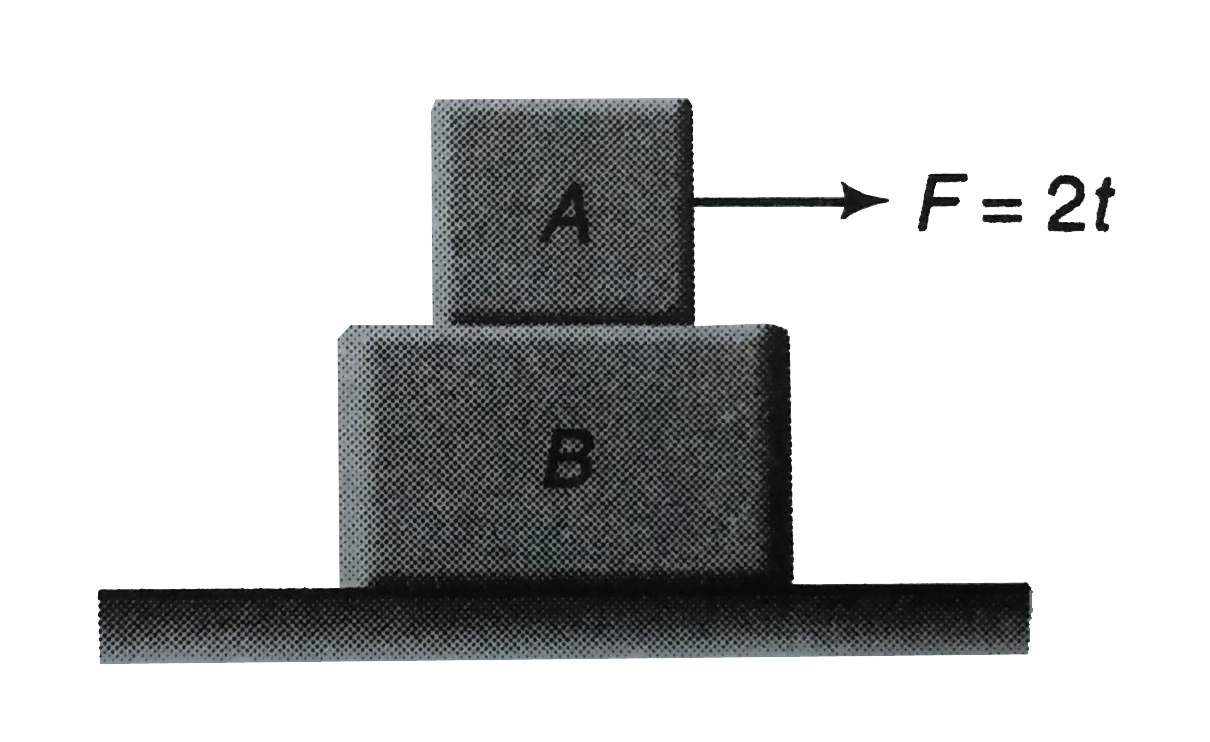
View Solutioncoefficient of friction between two blocks shown in figure is `mu =0.6`. The blocks are given velocities in the direction shown in figure. Find
(a) the time when relative motion between them is stopped.
(b) the common velocity of the two blocks.
(c) the displacement of `1kg` and `2kg` blocks upto that instant. `(Take g =10m//s^(2))`
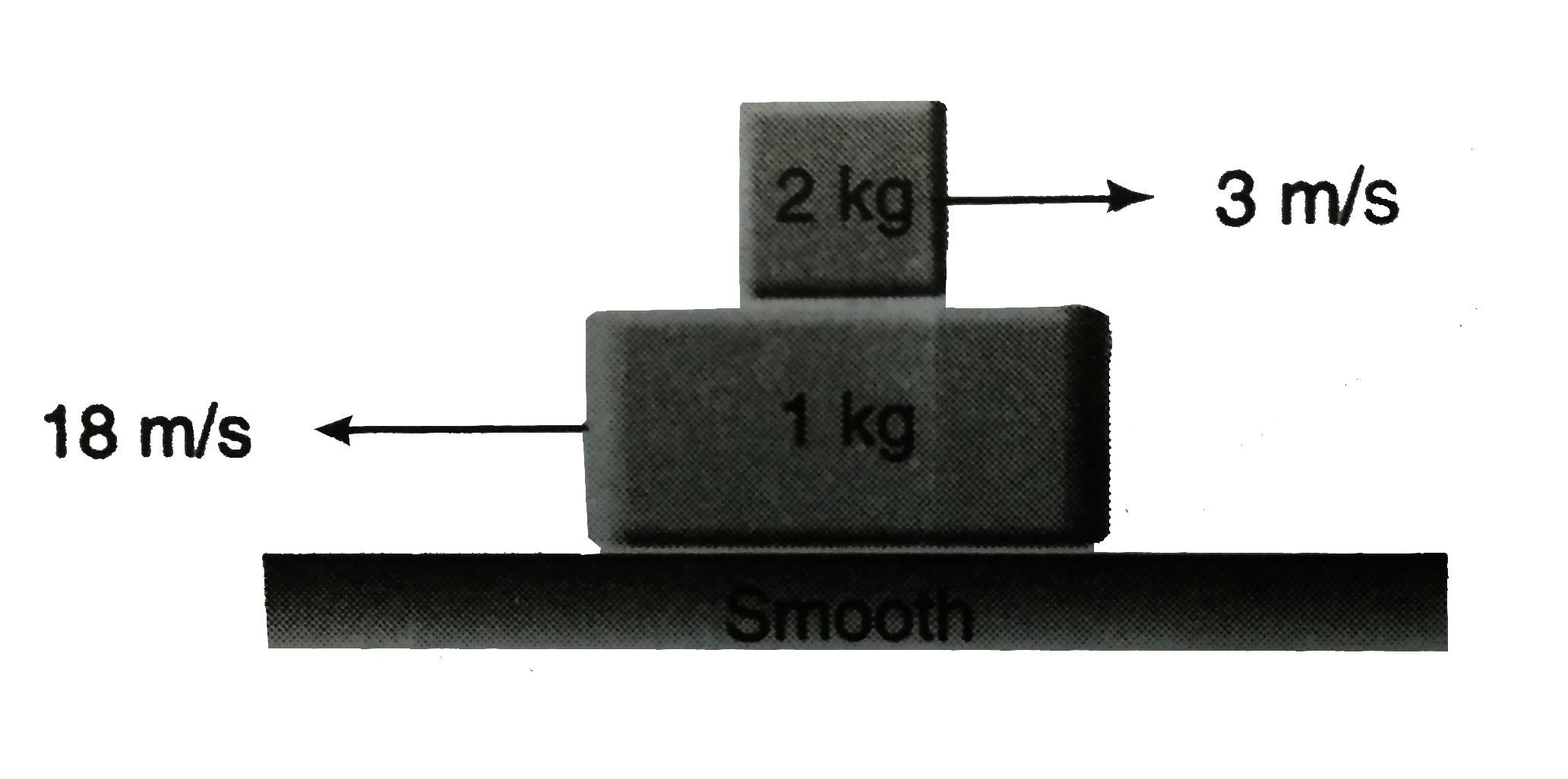
View SolutionOn a horizontal rough road , value of coefficient of friction `mu =0.4`.Find the minimum time in which a distance of `400m` can be covered. The car start from rest and finally comes to rest.
View SolutionA car is moving up the plane. Angle of inclination is `theta` and coeffcient of friction is `mu`
(a)What is the condition in which car can be acceleration?
If this condition is satisfied then find (b) maximum acceleration of the car.
(c) minimum retardation of the car.
(d) maximum retardation of the car.
View Solution
Solved Examples questions and complete solutions for chapter LAWS OF MOTION of DC PANDEY ENGLISH of Class 11
All Exercises from DC PANDEY Class 11 PHYSICS LAWS OF MOTION
- Assertion And Reason
- Chapter exercises (A) Taking it together
- Check point 5.1
- Check point 5.2
- Check point 5.3
- Check point 5.4
- Comprehension
- Example
- Exercise 8.1
- Exercise 8.2
- Exercise 8.3
- Exercise 8.4
- Exercise 8.5
- Match the columns
- Medical entrances gallery
- Miscellaneous Examples
- Objective Question
- Single Correct
- Solved Examples
- Subjective Question